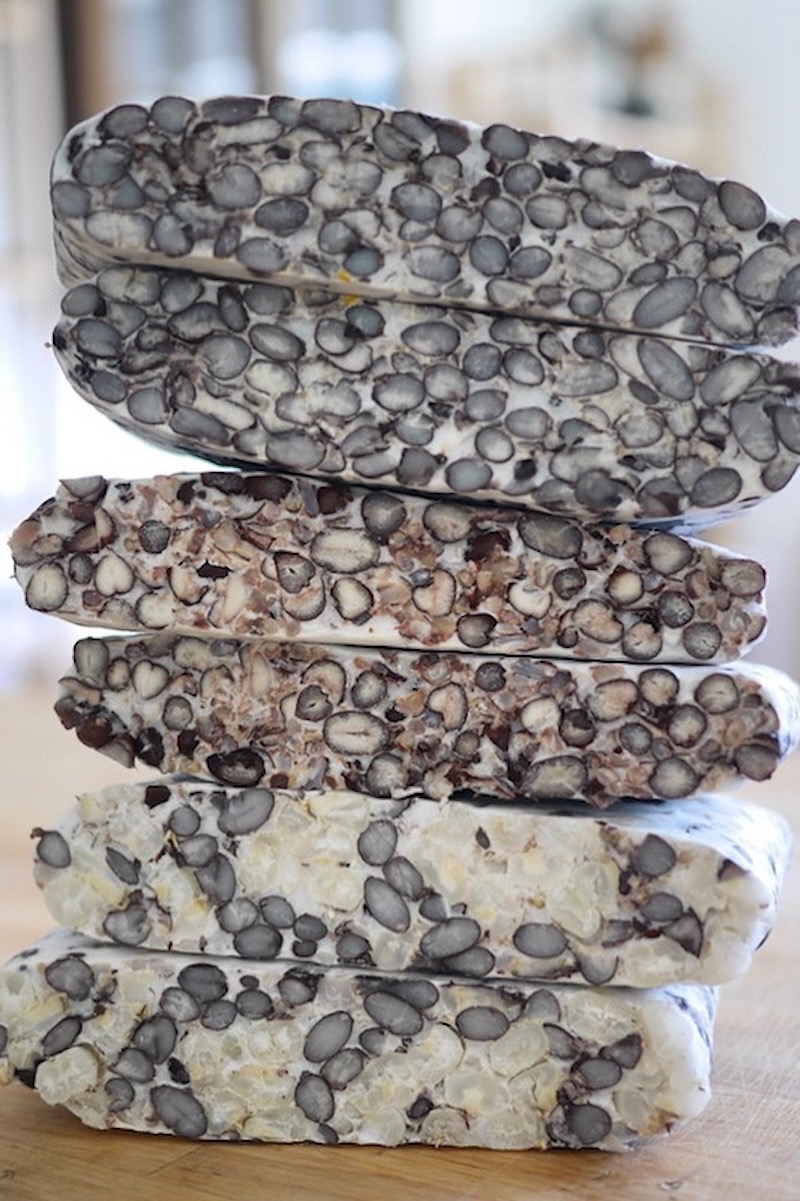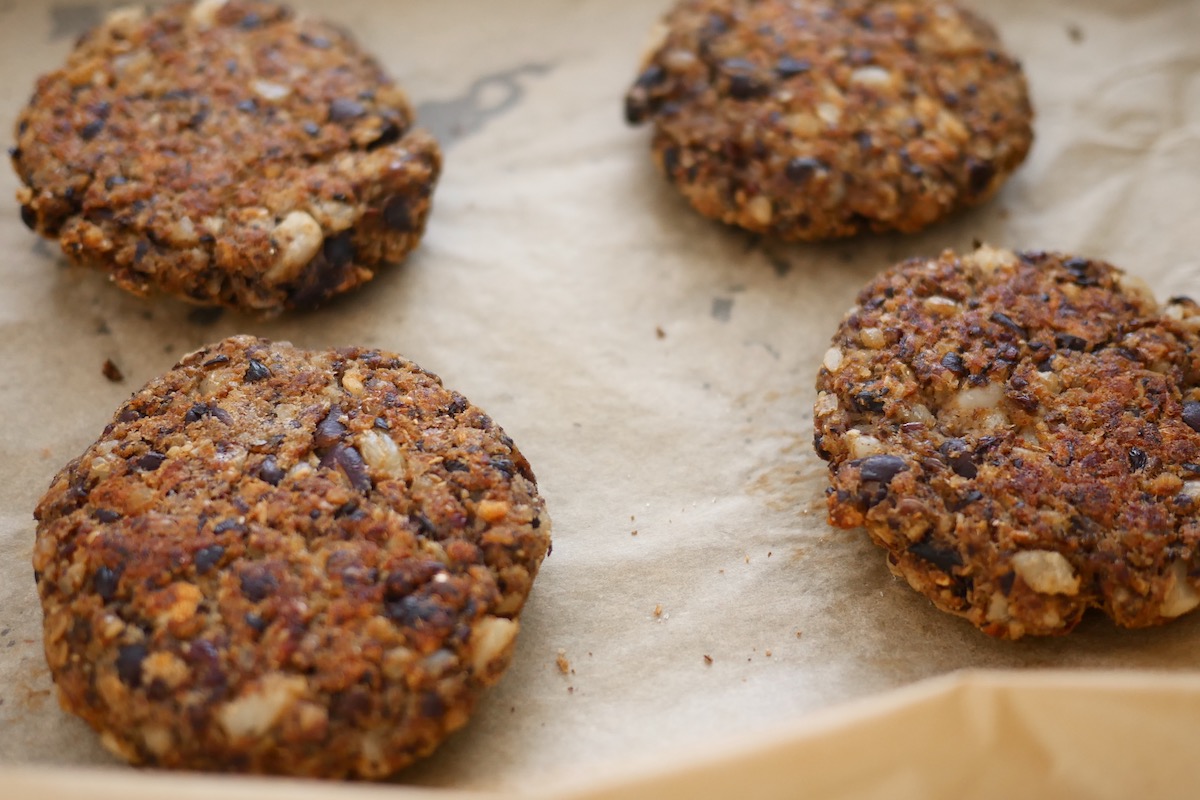What is Tempeh?
Last October, American food professionals visited fermented food producers to deepen their knowledge of Japanese fermentation culture during the “Hakko Tourism in Japan” tour campaign. As part of the tour, organizers held a tasting session where guests gave candid advice from the perspective of the American market to food product manufacturers looking to enter the United States market.
Tempeh is a delicious traditional plant-based protein that has been leveled up by fermentation. Traditionally it is made with soybeans but can be made with any legume or grain. For those familiar with koji it is similar in that it is also a fungi-based fermentation–just a different team. People across the planet are using their local ingredients and with this humble mold creating delicious sustainable food. But let’s back up a bit.

Tempeh made with black beans
(Photo by Kirsten K. Shockey)

Fresh tempeh rhizopus
(Photo by Kirsten K. Shockey)

Plant-based Koji Tempeh Burger

Ingredients
- 7 grams (1 tablespoon) flax seed, finely ground
- 9 grams (1 tablespoon) black sesame seeds, finely ground
- 50 grams (1/2 cup) pecans, rough chopped
- 1/2 small onion (about 70 grams), chopped and lightly sauteed
- 3 garlic cloves, minced and sauteed
Prepare the above ingredients as directed and set aside.
- 227 grams (8-ounce block) tempeh, broken into pieces
- 60 grams (1/2 cup plus 1 tablespoon) koji flour
- 60 grams (1 cup) breadcrumbs
- 20 grams (1 tablespoon) shio koji
- 5 grams (1 teaspoon) vinegar
- 11 grams (2 teaspoons) tomato paste
- 125 ml (1/2 cup) oat milk or koji oat milk
- Oil for frying
Directions
1. Prepare the first five ingredients as indicated and place them in food processor with the rest of the ingredients, except for the pecans. Process until paste-like, but not completely smooth. Mix the pecans in by hand.
2. Chill the mixture in a covered container for at least 3 hours or overnight.
3. Form patties and fry them in your favorite high-heat oil. You will fry at medium heat until crispy on both sides.
4. Enjoy!

For Further Reading:
How Fermentation Works to Preserve Food and Punch Up Flavors
Kirsten K Shockey is a renowned fermentation expert, author, and co-founder of The Fermentation School. She empowers people to connect with their food through hands-on workshops and her popular books, including Fermented Vegetables and Homebrewed Vinegar. Her expertise has made her a trusted authority in the world of fermentation.

